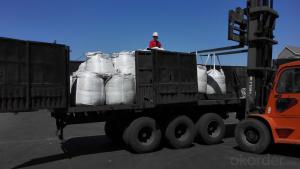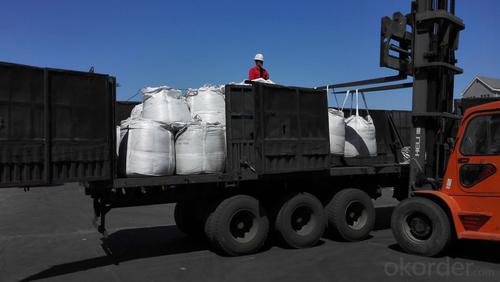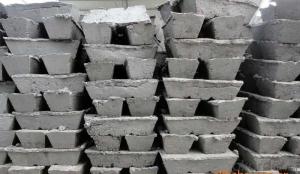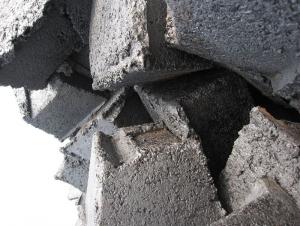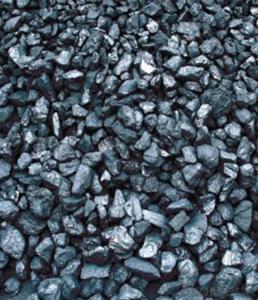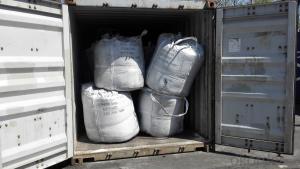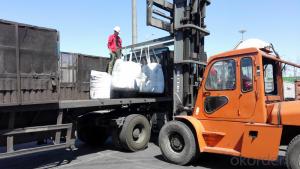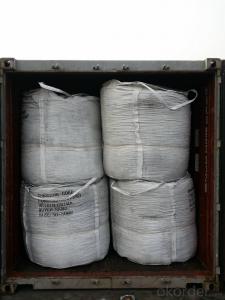S0.5% Carbon additive with VM 1.5% 0-3mm 90%
- Loading Port:
- Tianjin
- Payment Terms:
- TT OR LC
- Min Order Qty:
- 20.5
- Supply Capability:
- 1005 m.t./month
OKorder Service Pledge
OKorder Financial Service
You Might Also Like
Introduction:
Calcined anthracite can be called carbon additive, carbon raiser, recarburizer, injection coke, charging coke, gas calcined anthracite. We sincerely welcome clients to visit our factory.
Best quality Anthracite as raw materials through high temperature calcined at over 2000℃ by the DC electric calciner with results in eliminating the moisture and volatile matter from Anthracite efficiently, improving the density and the electric conductivity and strengthening the mechanical strength and anti-oxidation. It has good characteristics with low ash, low resistivity, low sulphur, high carbon and high density. It is the best material for high quality carbon products. It is used as carbon additive in steel industry or fuel.
Features:
G-High Calcined Anthracite is produced when Anthracite is calcined under the temperature of 1240°C in vertical shaft furnaces. G-High Calcined Anthracite is mainly used in electric steel ovens, water filtering, rust removal in shipbuilding and production of carbon material.
Specifications:
F.C.% | 95MIN | 94MIN | 93MIN | 92MIN | 90MIN | 85MIN | 84MIN |
ASH % | 4MAX | 5MAX | 6 MAX | 6.5MAX | 8.5MAX | 12MAX | 13MAX |
V.M.% | 1 MAX | 1MAX | 1.0MAX | 1.5MAX | 1.5MAX | 3 MAX | 3 MAX |
SULFUR % | 0.3MAX | 0.3MAX | 0.3MAX | 0.35MAX | 0.35MAX | 0.5MAX | 0.5MAX |
MOISTURE % | 0.5MAX | 0.5MAX | 0.5MAX | 0.5MAX | 0.5MAX | 1MAX | 1MAX |
Pictures

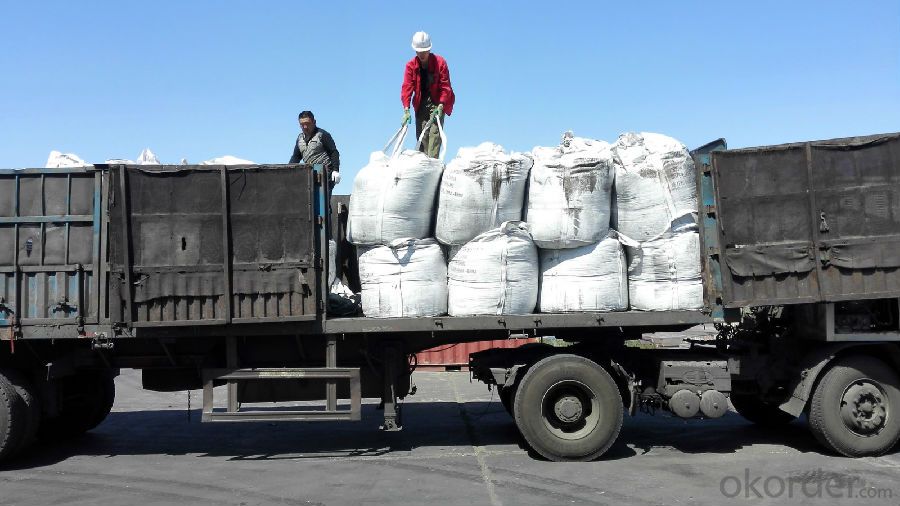
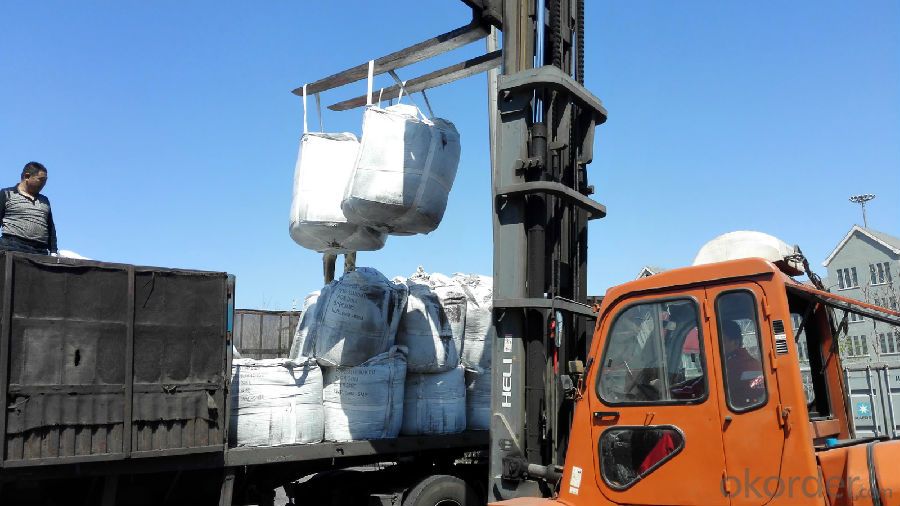
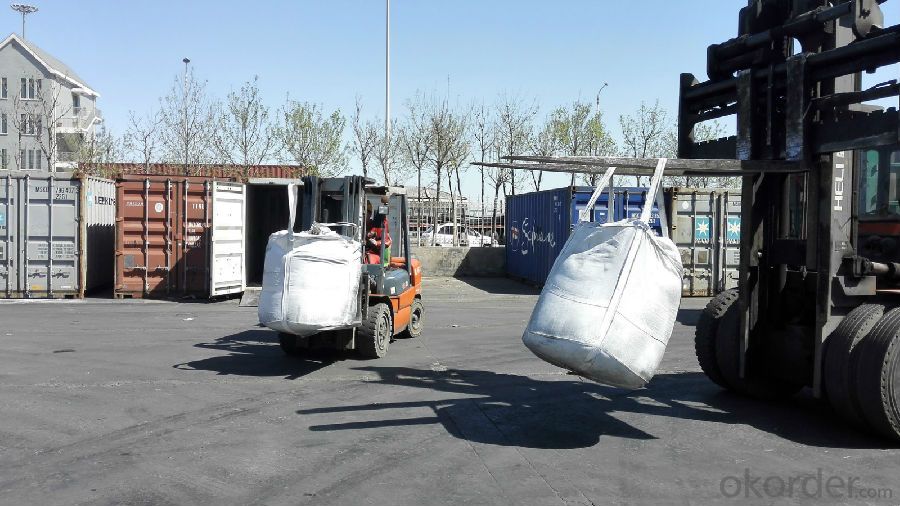
FAQ:
Packing:
(1). Waterproof jumbo bags: 800kgs~1100kgs/ bag according to different grain sizes;
(2). Waterproof PP woven bags / Paper bags: 5kg / 7.5kg / 12.5kg / 20kg / 25kg / 30kg / 50kg small bags;
(3). Small bags into jumbo bags: waterproof PP woven bags / paper bags in 800kg ~1100kg jumbo bags.
Payment terms
20% down payment and 80% against copy of B/L.
Workable LC at sight,
- Q: How does carbon impact the availability of natural resources?
- Carbon impacts the availability of natural resources by contributing to climate change. Excessive carbon emissions, primarily from burning fossil fuels, lead to global warming, which in turn affects the availability and distribution of resources such as water, food, and energy. Additionally, carbon pollution can cause ocean acidification, harming marine ecosystems and reducing fish populations. Therefore, controlling carbon emissions is crucial to ensure the sustainable availability of natural resources.
- Q: What are the carbon nanotube applications?
- The application of carbon nanotubes in composite materials: carbon nanotubes with nanoparticles in size effect, but also has high mechanical strength, good flexibility, high conductivity, unique properties, become the ideal reinforcement of polymer composites, is widely used in chemical industry, machinery, electronics, aviation, aerospace and other fields. But because of carbon nanotubes are easily assembled into bundles or wound, and compared with other nanoparticles, the surface is relatively inert, in common organic solvents or polymer materials dispersion in the low, which greatly restricts its application. Therefore, the surface of carbon nanotubes modified carbon nanotubes has become a research hotspot the polymer / composite material. At present, the domestic and foreign research on the surface modification of carbon nanotubes is mainly covalent and non covalent bond groups introduced on the surface, such as the use of the surface Chemical modification, surfactant modification, or by coating modification methods of carbon nanotube polymer molecules. In recent years is presented. The ultraviolet irradiation, plasma radiation modification and processing method. The surface modification of carbon nanotubes for polymer composites can significantly improve the mechanical properties, electrical properties and thermal properties.
- Q: What are the different types of carbon-based plastics?
- Carbon-based plastics come in various types, each possessing distinct characteristics and uses. Among the commonly known variants are: 1. Polyethylene (PE): This plastic, available in high-density polyethylene (HDPE) and low-density polyethylene (LDPE) forms, is widely employed due to its strength, flexibility, and resistance to chemicals. It finds applications in packaging, pipes, and toys. 2. Polypropylene (PP): Renowned for its high melting point, chemical resistance, and durability, PP is a popular choice for automotive parts, appliances, and packaging. 3. Polystyrene (PS): PS, a rigid plastic, frequently features in disposable products like food containers and packaging materials. Its lightweight nature and good insulation properties make it advantageous. 4. Polyvinyl Chloride (PVC): PVC, a versatile plastic that can be flexible or rigid based on its composition, sees wide usage in construction materials, pipes, cables, and vinyl flooring. 5. Polyethylene Terephthalate (PET): PET, a lightweight and sturdy plastic, is commonly employed in beverage bottles, food packaging, and textile fibers. It is renowned for its exceptional resistance to gas and moisture. 6. Polycarbonate (PC): PC, a transparent plastic, stands out for its high resistance to impact and heat. It is often utilized in eyewear, automotive parts, and electronic devices. These examples represent just a fraction of the carbon-based plastics available in the market. Numerous other variations and blends exist, and the choice of plastic depends on factors such as intended application, desired properties, and environmental considerations.
- Q: How does carbon impact the prevalence of landslides?
- Carbon does not directly impact the prevalence of landslides. However, human activities related to carbon emissions, such as deforestation and mining, can contribute to the destabilization of slopes and increase the likelihood of landslides occurring.
- Q: What are the consequences of increased carbon emissions on human migration patterns?
- Increased carbon emissions have significant consequences on human migration patterns. One of the most prominent effects is the exacerbation of climate change, leading to more frequent and intense natural disasters such as hurricanes, floods, and droughts. These extreme weather events can devastate communities, destroy infrastructure, and disrupt livelihoods, forcing people to migrate in search of safer and more stable environments. Rising sea levels, another consequence of carbon emissions, pose a significant threat to coastal regions and island nations. As sea levels continue to rise, low-lying areas become more prone to flooding and coastal erosion, making them uninhabitable. This displacement of populations, commonly referred to as climate refugees, can lead to mass migrations, putting additional strain on resources and infrastructure in destination areas. Moreover, carbon emissions contribute to changes in temperature and precipitation patterns, which can have a profound impact on agricultural activities. Shifts in growing seasons, increased frequency of droughts or floods, and the spread of pests and diseases can negatively affect crop yields and food security. This disruption in the availability of food and resources can push vulnerable populations to migrate in search of better livelihoods and food sources. The consequences of increased carbon emissions on human migration patterns also extend to health issues. Climate change can lead to the spread of diseases, such as malaria and dengue fever, as well as worsen air pollution, exacerbating respiratory problems. These health risks can force individuals and communities to relocate to areas with better healthcare infrastructure and conditions. In summary, increased carbon emissions have wide-ranging consequences on human migration patterns. The intensification of climate change, rising sea levels, disruptions to agriculture, and health risks all contribute to the displacement of populations, creating a need for individuals and communities to seek safer and more stable environments. Addressing carbon emissions and mitigating climate change is essential to minimize the negative impacts on human migration and ensure a sustainable future.
- Q: How does carbon dioxide affect waste management processes?
- Carbon dioxide can affect waste management processes by contributing to the greenhouse effect and climate change. Increased levels of carbon dioxide in the atmosphere can lead to higher temperatures, which can impact waste decomposition rates, emission of greenhouse gases from landfills, and the overall efficiency of waste treatment technologies. Additionally, carbon dioxide emissions from waste incineration can contribute to the overall carbon footprint of waste management processes.
- Q: What are the consequences of increased carbon emissions on global food security?
- Global food security is significantly impacted by increased carbon emissions, with a range of consequences. One immediate effect is the alteration of weather patterns and an increase in extreme weather events, such as droughts, floods, and heatwaves. These events can result in crop failures, reduced agricultural productivity, and the loss of livestock, ultimately leading to food shortages and price instability. In addition, carbon emissions contribute to climate change, which causes long-term shifts in temperature and precipitation patterns. Higher temperatures can accelerate the growth and reproduction rates of pests and diseases, posing a severe threat to crops and livestock. Furthermore, changes in rainfall patterns can disrupt the timing and quantity of water available for irrigation, further reducing agricultural productivity. Moreover, carbon emissions contribute to ocean acidification, negatively impacting marine ecosystems and the livelihoods of fishing and aquaculture communities. This can result in a decline in fish stocks, jeopardizing an essential source of protein and nutrition for millions of people. Increased carbon emissions also lead to the loss of biodiversity. Climate change disrupts ecosystems, leading to the extinction or migration of plant and animal species. This loss of biodiversity reduces the resilience and adaptability of agricultural systems, making them more susceptible to pests, diseases, and environmental pressures. Ultimately, the consequences of increased carbon emissions on global food security are extensive and intricate. They include diminished agricultural productivity, rising food prices, food shortages, and limited access to nutritious food. Addressing carbon emissions and mitigating climate change is vital to ensure a sustainable and secure global food system for future generations.
- Q: Who can explain that bare feet on fire carbon don't burn feet?
- These two substances are edible, containing in the mouth is naturally very safe, plus cinnabar is red, and dissolve it in the water, this red holy water is more mysterious.From time to time to the fire scattered in the "law" law of water spray powder "and" add before have feet soaking in full dissolution of cinnabar and borax "holy water", which is on the fire and carbon between your feet to form a thin protective layer of "sand", which has scientific significance, is is that all the fairies and the real reason for lossless hair or.The world is material. A scholar once said, "what is a ghost?" Some phenomena that cannot be explained by science are ghosts in our hearts. If we can continue to search in the way of science, ghosts will leave us!
- Q: What are the impacts of carbon emissions on the stability of kelp forests?
- Kelp forests are significantly affected by carbon emissions, which have a major impact on their stability. The increased levels of carbon dioxide in the atmosphere lead to ocean acidification, causing harmful effects on kelp. When carbon dioxide dissolves in seawater, it creates carbonic acid, which lowers the ocean's pH. This acidification prevents kelp from growing and developing properly, making them more vulnerable to stressors and reducing their overall stability. Ocean acidification affects kelp physiology in various ways. It impairs their ability to absorb essential nutrients like nitrogen and phosphorus, which are crucial for their growth. This nutrient deficiency weakens the kelp, making them more susceptible to diseases, predation, and damage from storms. Moreover, acidified seawater hinders the development of kelp spores, which impairs their ability to reproduce and regenerate kelp forests. Furthermore, carbon emissions contribute to the increase in sea temperatures, which also harm kelp forests. As the climate warms, kelp may face thermal stress, resulting in slower growth rates and higher mortality rates. Warmer waters also create favorable conditions for harmful algae species, which can outcompete kelp for space and resources, further destabilizing kelp forests. The stability of kelp forests is crucial because they provide numerous ecosystem services. They act as important carbon sinks, absorbing and storing large amounts of carbon dioxide from the atmosphere. Kelp forests also serve as habitats and nursery grounds for a wide range of marine species, including commercially important fish and invertebrates. They play a vital role in maintaining the health and productivity of coastal ecosystems by reducing coastal erosion, improving water quality, and supporting biodiversity. To mitigate the impacts of carbon emissions on kelp forests, it is crucial to reduce our carbon footprint by transitioning to cleaner and more sustainable energy sources. Additionally, protecting and restoring coastal habitats, including kelp forests, can enhance their resilience to climate change and other stressors. Implementing sustainable fishing practices and establishing marine protected areas can also help preserve and maintain the stability of kelp forests and the valuable ecosystem services they provide.
- Q: What does "2T-250,1U-200@300" and "1Y-100" mean in carbon fiber cloth reinforcement?
- the indicates that the U type hoop is 200 wide and the spacing is 300; the 1Y-100 represents the width of the 100 width and each of the two sides of the beam. The units are mm.
Send your message to us
S0.5% Carbon additive with VM 1.5% 0-3mm 90%
- Loading Port:
- Tianjin
- Payment Terms:
- TT OR LC
- Min Order Qty:
- 20.5
- Supply Capability:
- 1005 m.t./month
OKorder Service Pledge
OKorder Financial Service
Similar products
Hot products
Hot Searches
